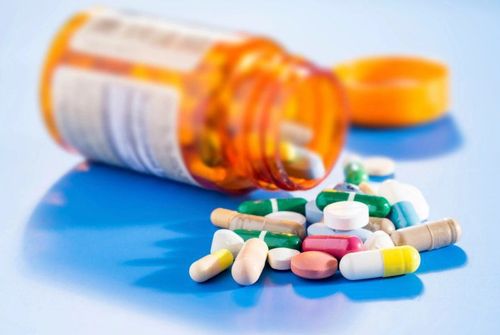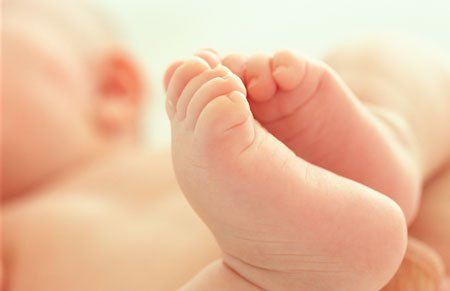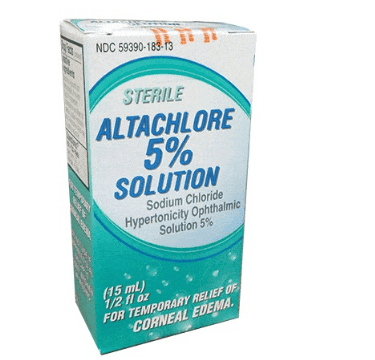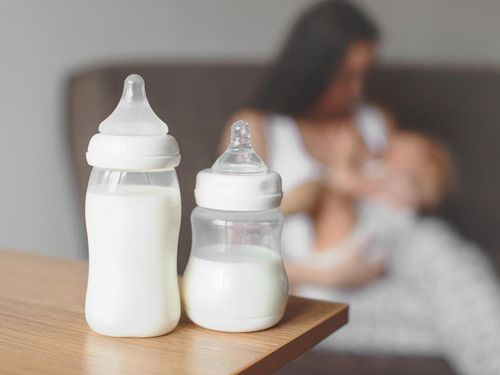This is an automatically translated article.
The article is professionally consulted by Master, Doctor Doan Ngoc Quynh Tram - Department of Pediatrics - Neonatology - Vinmec Nha Trang International General Hospital.Nowadays, life is improved, quality of life is improved, many parents have chosen good items for their newborn babies. But that is still not enough to take the best care of babies, because during use, these items will get dirty and need to be cleaned properly. It's extremely important to clean baby utensils, this helps prevent germs from infecting your baby.
1. What are baby supplies?
Baby supplies include bottles and pacifiers, rings and caps that come with them. Some bottles may also have a valve or filter. Some babies can be fed with syringes, medicine cups, spoons, and other utensils.It is extremely important to clean baby utensils, as these are often used to get food, water or medicine into the baby's mouth. If one of these items has germs on it, your child will get an infection.
2. Sanitize baby items in the dishwasher
Dismantling: Separate all bottle parts (eg, bottle, teat, cap, ring, valve). Rinse with clean water: Rinse bottle parts and any other items by leaving them under running water. You can use warm or cold water, whichever you prefer. Putting supplies in the dishwasher: Place baby bottle parts and other feeding items in the dishwasher. Be sure to place small items in an airtight basket or mesh bag so they don't get stuck in the dishwasher's filter. If possible, run the dishwasher with hot water and a hot drying cycle (or disinfecting mode); this can help kill more germs. Remove items from the dishwasher: Wash your hands with soap and water before removing and storing cleaned items. If items are not completely dry, place them on a clean, unused dish towel or paper towel to air dry completely before storing in a dust-free place. Do not use dish towels to rub or dry items as doing so can transfer germs to the utensils.3. Sanitize baby utensils by hand
Wash hands: Wash hands with soap and water for 20 seconds. Disassemble items: Separate all parts of the bottle such as bottle, teat, cap, ring, valve. Rinse with clean water: Rinse bottle parts and any other items by placing them under running water. Do not put them in the sink. You can use warm or cold water, whichever you prefer. Wash feeding utensils with soap. Place all items in a clean basin or bucket intended for cleaning infant items only. Do not wash directly in the sink as this may contain germs that contaminate these items. Fill the sink with hot water and add soap. Scrub utensils with a clean brush intended only for cleaning baby items. Squeeze water through the nipple holes to make sure they're clean. Rinse with clean water: Rinse by leaving items under running water, or by leaving them completely under clean running water, in a separate basin used only for cleaning infant items. Air-dry: Place bottle, sink, and bottle brush parts on a clean, unused dish towel or paper towel in an area protected from dirt. Let dry completely in the air. Do not use dish towels to rub or dry items, as doing so can transfer bacteria to the utensils used by babies. Clean sinks and bottle cleaners: Clean sinks and bottle cleaners so they air dry after each use. Wash them every few days, in the dishwasher with hot water and a hot drying cycle (if they're dishwasher safe), or by hand with soap and warm water. If your baby is under 3 months old, was born prematurely, or has a weakened immune system due to illness (such as HIV) or medical treatment (such as cancer chemotherapy), wash pots and bottles after each use. use.
4. Some other measures to ensure the hygiene of baby utensils
If you use a dishwasher with hot water and a heat cycle (or a cleaning setting) to clean baby feeding items, this separate cleaning step does not need to be performed.To remove more bacteria, clean feeding items at least once per day. Hygiene is especially important when your baby is under 3 months old, was born prematurely, or has a weakened immune system. Daily cleaning of dishes may not be necessary for older, healthy children, if such utensils are carefully cleaned after each use.
Before cleaning, make sure you've cleaned the feeding items, bottle brush, and sink using one of the methods above. Clean all items (even the bottle cleaner and sink) using one of the following options. Check appliance labels for proper cleaning.
Use boiling water: Place disassembled infant feeding supplies in a pot, fill with water and cover. Place the pot on the stove and bring to a boil. Boil for 5 minutes. Remove items with tongs. Steam: Place disassembled items in a microwave or plug-in steam system and follow the manufacturer's instructions for disinfecting, cooling, and drying items. Use bleach: If you can't boil water, steam, or use the dishwasher Prepare a bleach solution of 2 teaspoons of unscented bleach per gallon (16 cups) of water in a clean wash basin. Completely submerge all items, check that the solution touches all parts and that there are no air bubbles in the bottle. Squeeze the solution through the nipple holes. Soak items in the solution for at least 2 minutes. Use clean hands or tongs to remove utensils. Do not rinse as germs can get back into disinfected items. Any bleach left over will spoil quickly as it dries and won't hurt your baby. The process is similar to what is done to disinfect dishes in a restaurant. After disinfecting, place items on clean unused dish towels or paper towels in an area protected from dirt. Let dry completely in the air before storing. Do not use dish towels to rub or dry items as doing so can transfer germs to the dishes.
5. How to safely store baby items
For baby feeding utensils, bottle brushes and clean wash basins to air dry completely before storing to prevent germs and mold growth. When items are completely dry, stack them together and store in a clean, protected area to prevent contamination.Steps to store baby items safely:
Hand washing: Wash hands thoroughly with soap and water. Reassemble the item parts: Put the clean and dry bottle parts together. Store safely: Place reassembled bottles and other feeding supplies, wash basins, and dry bottle brushes in a clean, protected area, such as inside a closed kitchen cabinet. Used to store clean dishes.

6. Some questions about cleaning baby utensils
6.1. What is the difference between cleaning and sanitizing baby bottles? Cleaning is the use of soap and water to remove germs from the jar. Sanitizing is an extra step to kill more germs on cleaned items. Sanitizing eating utensils provides more protection against all infections.6.2. How often should baby bottles be cleaned? Bottles should be cleaned after each feeding. If your baby doesn't finish a bottle within 2 hours, throw away any unused formula. Germs can grow quickly if breast milk or formula is added to partially used bottles, or if used bottles are simply rinsed rather than cleaned.
If the baby is under 3 months old, was born prematurely, or has a weakened immune system due to illness (such as HIV ) or medical treatment (such as cancer chemotherapy), cleaning feeding utensils daily (or more often) is especially important. Daily cleaning of feeding utensils may not be necessary for older, healthy children, if such utensils are carefully cleaned after each use.
6.3. How do I clean the brush and basin used to wash the bottles? You can clean the brushes and basin in the dishwasher if they are dishwasher safe, or by hand washing with soap and hot water. They may be disinfected using one of the methods above (boiling, steaming, or soaking in a bleach solution) if so recommended by the item's manufacturer. If you are steaming an item, make sure the entire item fits inside the steamer.
6.4. Why dry baby clothes on a clean towel instead of a drying rack? Drying baby supplies on clean paper towels or paper towels is probably more hygienic than using a drying rack. Drying racks can trap moisture, create conditions for mold and germs to grow, and are difficult to clean. If you prefer to use a drying rack, use a drying rack only for babies. Every few days or daily if your baby is under 3 months old, born prematurely, or has a compromised immune system, be sure to rinse, sanitize and let dry completely to reduce contamination.
6.5. Do infant formula containers need to be cleaned? No studies have shown that infants become ill from contamination of the outside of infant formula containers. In addition, infant formula is less likely to become contaminated if it is kept dry. Avoid using liquid detergents on infant formula containers to avoid contaminating the formula inside the container.
If you want to clean the formula container, use disinfectant wipes or paper towels with disinfectant to wipe the outside of the can and lid before opening the can for the first time. Do not submerge the milk carton or place it under running water. Wait until the surface is completely dry before opening the box. Do not clean the inside of the infant formula container.
6.6. Do infant formula spoons need to be cleaned? As the formula remains dry, it is less likely to be contaminated with bacteria. To keep liquids away from formula, do not clean the scoop unless it is dirty. If the spoon falls on the floor or gets soiled, clean it carefully as you would with a baby bottle and let it dry completely before placing it in the formula container.

6.7. Can a blender, whisk or spoon be used to mix formula?
The safest method of preparing formula is to shake or swirl the milk and water inside the bottle. Blenders can be difficult to clean, and blenders used to make infant formula have been linked to illness in babies. Whippers and spoons are easier to clean, but they can still increase the risk of bacteria getting into your baby's milk.Please dial HOTLINE for more information or register for an appointment HERE. Download MyVinmec app to make appointments faster and to manage your bookings easily.
Reference source: cdc.gov













